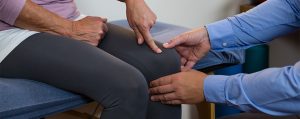2023 Athletico Wellness Challenge
Need some inspiration to keep up with your new year’s health and wellness goals?
We’ve put together monthly challenges to help you improve your physical and mental well-being.
How to Make Small Changes to Your Exercise Routine That Have a Big Impact
When starting or changing up your exercise routine, there can be an overwhelming amount of information and voices coming at you. It can be hard to decide which path to choose. What will work best for me? Am I doing the right thing? Can I do this? While there is no perfect exercise prescription for everyone, there are a few simple things to consider when compiling your ideal exercise routine!
Creative Way to Get Moving When Working from the Office
While Americans work in various industries and hold many different jobs, there’s one constant thread that can be seen through nearly all people’s work. They spend far too much of their day sitting.
Sedentary jobs have increased 83% for Americans since the 1950s, and physically active occupations make up less than 20% of all U.S. jobs. The shifting landscape of American work doesn’t seem to be reversing course anytime soon, and, unfortunately, it negatively impacts on our society’s health.
Health Has No Age: Anaerobic Exercise for Teens, Adults, and Seniors
Cardiovascular disease has been the leading cause of death over the last century. Cardio exercise, also called aerobic exercise, has become popular due to its benefits for the cardiovascular system. However, aerobic exercise is not the only form of exercise. Anaerobic exercise is another form that people of all ages need to participate in to achieve optimal health.
Anaerobic exercise is defined as exercise of high intensity and short duration where oxygen is not the primary energy source. Anaerobic means “without oxygen,” and instead of using oxygen as the energy source, the body uses stored energy in the muscles and fat.
How To Build a New Year Workout Plan That You’ll Really Stick To
By some estimates, up to 95% of New Year’s resolutions are health or fitness oriented. Unfortunately, 43% of people abandon their goal after one month, and only 10% believe they will still be pursuing their health and fitness goals after three months.
You don’t have to be a rocket scientist to understand those are not good odds. So why do so many need help sticking to a New Year workout plan? The quick answer is found in the intention-behavior gap.
From Swelling after an Injury to Static Stretches for Improved Flexibility: Top 10 Blogs of 2022
As the 2022 year ends, we looked back at the top ten blogs that our knowledgeable clinicians here at Athletico wrote on various topics related to injuries, the effectiveness of dry needling, the benefits of stretching, and more!
Are You Feeling Stressed? Exercise Can Help!
With seven out of ten adults in the United States reporting stress or anxiety daily, stress is a common occurrence in people’s lives. Although stress is impossible to avoid altogether, there are ways to help manage it, one being exercise.
Best Ways to Stay Pain-Free On The Playground
Daily physical activity for children provides a number of advantages and health benefits for development. According to Dr. Edward Laskowski of Mayo Clinic, children should do vigorous activities at least three days a week. Adults who care for children can encourage them to participate in active play that includes many common school-age activities-such as playing on playground equipment. Despite all the musculoskeletal benefits of running, climbing, and jumping, there are always considerations to best ensure safety and pain-free play.
